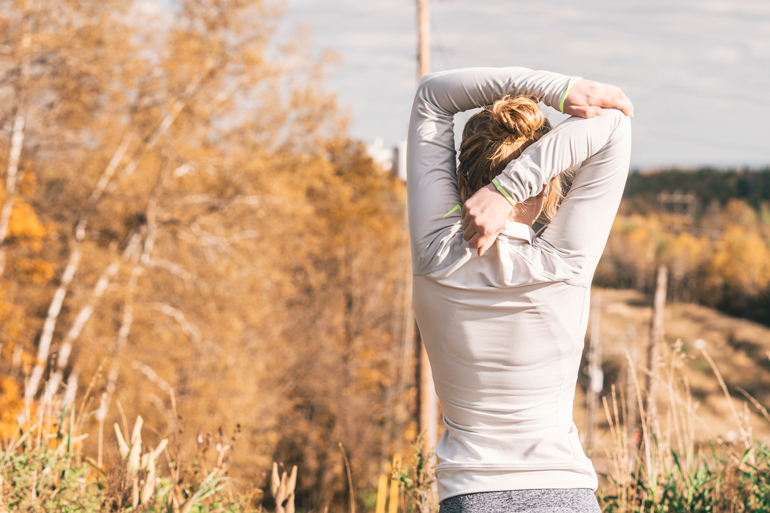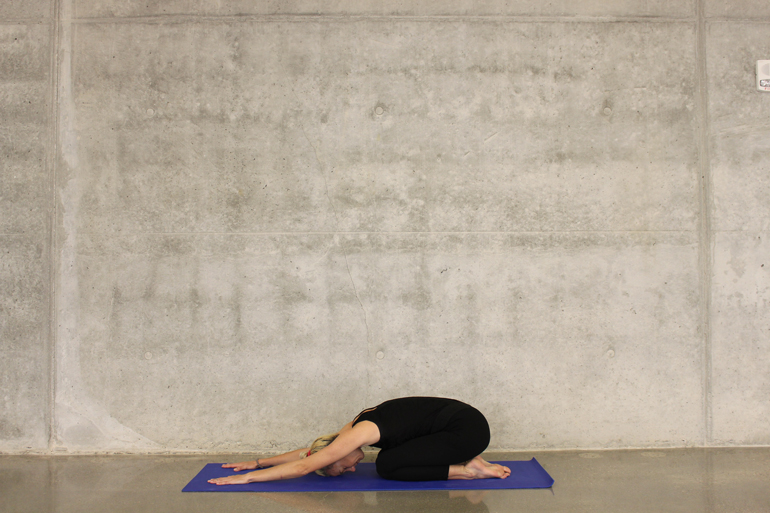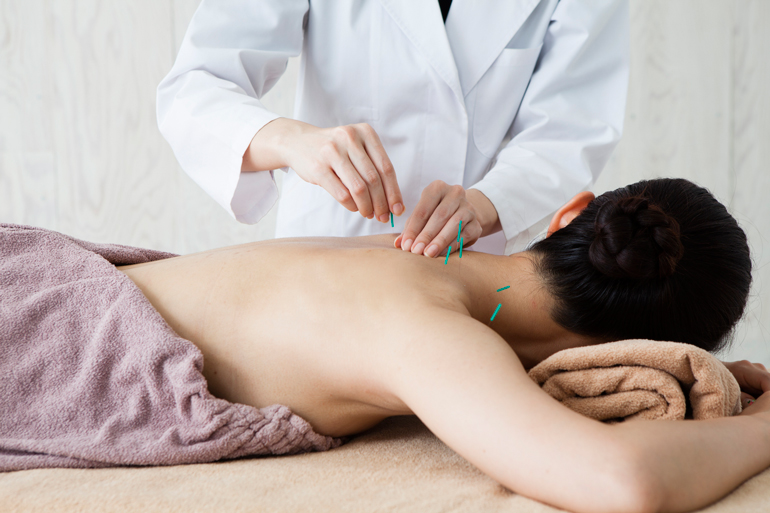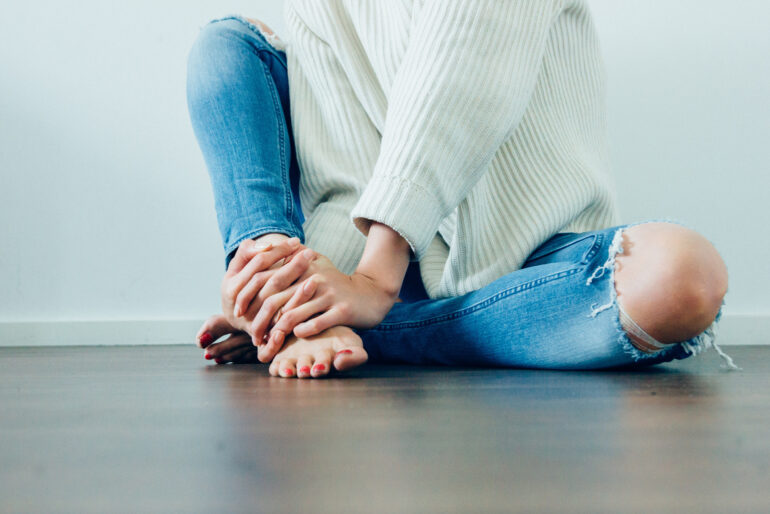Cramps, bloating, headaches: Menstrual cycles can no doubt take a major physical toll on women. But, on top of period pain, yo-yoing levels of serotonin — that brain chemical responsible for regulating moods — triggers PMS symptoms, which can zap your productivity, disrupt your sleep, and intensify anxiety or tension. That’s a lot to handle on repeat every month, right?
While you may be accustomed to dealing with the symptoms associated with PMS and your period (pass the heating pad and Ibuprofen, please!), there are actually several strategies than can help make that “time of the month” more bearable.
We asked health professionals for their best tips when it comes to managing PMS and period pain. Here’s what they have to say about practicing self-care around your period.
First, Why Do We Experience Pain on Our Periods?
Ovulation, or egg release, is the most likely cause for painful periods, explains Dr. Kimberly Langdon, OB-GYN, medical advisor at Medzino, a digital health company based in Europe and California. Painful cramps are often absent when the cycle does not produce an egg, she explains. “So, cramps are a good sign indicating a healthy, ovulatory cycle,” Langdon says.
While an occasional missed day at work or inability to run errands or exercise is not cause for concern, debilitating pain that prevents you from participating in normal activities or pain that doesn’t go away when your period ends should warrant a discussion with your doctor, Langdon says.
Period pain, in some cases, could indicate other health concerns, including an infection, endometriosis, ovarian cysts, or benign growths such as fibroids, she explains. An early miscarriage or tubal pregnancy can be mistaken for period cramps.
“In general, pain that starts before or at the beginning of a period that goes away after a few days is nothing to worry about, unless it is severe,” Langdon says.
In addition to heating pads and rest, here are some other ways to lessen period pain.
Exercise

Truth be told, you may just want to curl up in a ball when cramps strike. But exercising is actually one of the best ways to feel better on your period. “Exercise can help with menstrual cramps in a couple ways,” says Dr. Robert Wool, M.D. and an OB-GYN with Women’s Health Associates in Massachusetts. “One, it releases endorphins into the body, which help lift mood and reduce pain. In addition, it stimulates blood circulation and can help reduce uncomfortable bloating.”
Of the 14,000 women involved in a study, nearly eight out of 10 reported exercise reduced the symptoms of their period pain, according to researchers from St. Mary’s University and FitrWoman, an app that helps women track their menstrual cycles and makes personalized training and nutritional suggestions tailored to fluctuating hormone levels. Women reported that moderate-intensity exercise (think: brisk walking, biking, recreational swimming, yoga) was most effective in reducing period symptoms.
Other studies have proven that a consistent aerobic work-out regimen throughout the month can reduce period pain.
Drink Chamomile Tea
Tea varieties can provide a whole host of health benefits. If you’ve got cramps, though, chamomile tea is your best option, according to researchers from England. The herbal tea has potential to increase urinary levels of glycine, which is an amino acid known to relieve muscle spasms, researchers point out. The tea can help relieve menstrual cramps by relaxing the uterus.
Try Child’s Pose

Child’s pose is an ideal yoga pose when you’re on your period, says Erin Motz, of Bad Yogi, which offers online yoga classes. “Functionally, it’s a fantastic release for the lower back and hips,” she tells us. “If you get terrible cramps, child’s pose feels like a huge relief.” Plus, the restorative pose is easy, which makes it a good fit for those days when you’re feeling awful. If you’re new to yoga, you can find a “Child’s Pose” tutorial here, along with some more of Motz’s suggestions for poses to alleviate period pain. Essentially, you get into the pose by kneeling and bending your upper body downwards until your head touches the ground in front of your knees.
Plan on Ibuprofen in Advance
You may be accustomed to grabbing the Ibuprofen when you start to feel cramping, but if you are lucky enough to have a regular period and be proactive, that can alleviate a lot of pain. Dr. Kirsten Sasaki, OB-GYN at Advocate Lutheran General Hospital in Park Ridge, Illinois, recommends taking a non-steroidal anti-inflammatory, such as ibuprofen 400mg, every four to six hours prior to the onset of pain and continuing the medication for the first few days of bleeding. Be sure not to take the pain reliever on an empty stomach, she cautions.
Skip the Salty Snacks and Sweet Treats
You probably know that salty foods like chips, fast food, pizza, and pickles can all make bloating much worse because the high salt content in these foods translates to water retention, explains Cathy Posey, R.D., from HappyHouseful.com. But other foods with refined carbs, like sugary coffee drinks, pasta, sweets, and cereals, can also cause bloating. Refined carbohydrates cause your body to have to work hard to control your blood sugar level, which results in increased insulin production and stress on your hormone balances during a time that hormone balance is already difficult to maintain, she explains.
“The ironic thing is that these are the foods we crave and they make us feel worse,” Posey says.
Your best bet? Focus on whole, unprocessed foods, eat plenty of fresh fruits and veggies, and drink lots of water, Posey says.
But Indulge With Some Dark Chocolate
When it comes to treating period pain (also known as dysmenorrhea), the American College of Obstetricians and Gynecologists acknowledge that magnesium supplements may be helpful, but there’s not quite enough research done yet to recommend the mineral as a bona fide treatment. With that said, though, it’s worth trying. Magnesium is rich in foods like dark chocolate, almonds, boiled spinach, black beans, peanut butter, baked potatoes, bananas, salmon, and halibut.
Eat Foods Rich in Omega-3
Eating foods with Omega-3 fatty oils or taking fish oil may help reduce period cramps, some studies have suggested. One study published in the Caspian Journal of Medicine found that fish oil can suppress pain and inflammation. Another study in an OB-GYN journal found that omega-3 fatty acids have potential to reduce the intensity of menstrual cramps. Salmon, herring, oysters, walnuts, Brussels sprouts, spinach, and wild rice are some foods that are packed with omega-3.
Try Acupuncture

Acupuncture has also been shown to help relieve period symptoms, according to the American College of Obstetricians and Gynecologists. Among the studies was one published in Plos One in 2017 that was led by Australian researchers and that involved 74 women. The women who received more frequent acupuncture sessions experienced less period pain.
Products for a Better Period
- Livia: A drug-free method, this wearable device stimulates your nerves to block pain. The device is approved by the FDA. The selling point? It can reduce period pain instantly, so you don’t have to wait for pills to kick in. In a clinical study, 80 percent of women said Livia allowed them to drastically or completely eliminate the use of pain medication. Cost: Starts at $149 for a kit.
- Clue: There are several apps for period tracking, but Clue — which is free on both the App Store and Google Play — goes above and beyond. You can customize it with your birth control methods to get more accurate tracking. Also, PMS cloud icons show up when you’re entering that stage of your cycle. Plus, the app’s web page has a lot of period and women’s health resources on it.
- Menstrual cups: Have a love-hate relationship with tampons and pads? Flexible menstrual cups, typically made with rubber or silicone, can help prevent waste and also reduce leakage. You can wear the reusable cup for eight to 10 hours, empty the blood once its removed, and then wash it with soap and water. There are a lot of menstrual cups on the market and finding the right fit for you can be much like finding a bra brand that fits you best. The Mayo Clinic recommends checking with your healthcare provider if you have an IUD or have had toxic shock syndrome in the past. Menstrual cups start at less than $15.
 Brittany Anas is a freelance writer who specializes in health, fitness, and travel writing. She also contributes to Men’s Journal, Women’s Health, Trip Savvy, Simplemost, Orbitz, and Eat This, Not That! She spent a decade working at daily newspapers, including The Denver Post and the Daily Camera in Boulder, Colorado, and she is a former federal background investigator. In her free time, Brittany enjoys hiking with her gremlin-pot belly pig mix that the rescue described as a “Boston Terrier” and coaching youth basketball. She also works with domestic abuse survivors, helping them regain financial stability through career coaching. Follower her on Twitter and Instagram.
Brittany Anas is a freelance writer who specializes in health, fitness, and travel writing. She also contributes to Men’s Journal, Women’s Health, Trip Savvy, Simplemost, Orbitz, and Eat This, Not That! She spent a decade working at daily newspapers, including The Denver Post and the Daily Camera in Boulder, Colorado, and she is a former federal background investigator. In her free time, Brittany enjoys hiking with her gremlin-pot belly pig mix that the rescue described as a “Boston Terrier” and coaching youth basketball. She also works with domestic abuse survivors, helping them regain financial stability through career coaching. Follower her on Twitter and Instagram.

